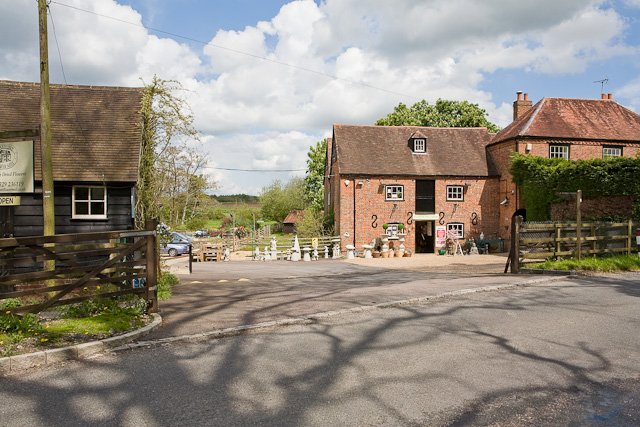
Boarhunt Village History
Boarhunt To-Day:
The village of North Boarhunt in Hampshire lies a couple of miles East of Wickham and three miles North East of Fareham. North Boarhunt is the only true village in the parish of Boarhunt, recorded in the 2001 electoral roll as having about 200 households many of whose residents, having lived in the parish for upwards of ten years, work locally or from home. It was also recorded then as having a Memorial Village Hall, a village shop and Post Office, a garage, and a Methodist Chapel. The village’s Anglican church of St Nicholas lies about two miles away by road in the southern corner of the parish. North Boarhunt was established when an area of the Bere Forest was deforested in the mid 19th century. The first record of the village of North Boarhunt being named is in 1864 in the Boarhunt Parish Register and is of the burial of a James Foot aged 73, at St Nicholas church.
At the far southern tip of the Parish lies Fort Nelson, one of the so-called ‘Palmerston Follies’. Fort Nelson, completed in 1871, is one of seven forts built on Portsdown Hill to protect the Portsmouth Naval Base from a French attack on Portsmouth from the land. The fort, now a Museum of the Royal Armouries, is situated next to Nelson’s Column, built in 1807 in memory of Viscount Nelson, paid for by the Royal Navy.
Boarhunt in History:
It has often been reported that a settlement at Boarhunt existed in Roman times and that the modern name is derived from the Roman use of a spring, thought to be the one still in existence at Ashley Down farm on the Southwick Estate. It has been supposed that this spring, a valuable source of fresh water, was protected in some way and that the name of the area around the spring was derived from this. The supposition is that the name Boarhunt has its origins in the two words Fons or Fontis from the Latin for a fountain, spring of fresh water or the source or origin of such water and Byrg or Burg from the Anglo Saxon word for a dwelling or dwellings within a fortified enclosure. No Roman remains of either a temporary or more permanent settlement have been found however, and the romance of this conjecture, whilst compelling, will surely remain supposition until Roman vestiges are identify to support it.
Whether such a settlement was domestic, and therefore may be regarded as the beginnings of a hamlet or village, is also questionable. Much more likely is that the spring was protected on a temporary basis by Roman soldiers garrisoned at Portchester Castle. Such a spring of fresh water would have been an invaluable asset and one, which would necessarily have been closely guarded. What is more certain is that in Roman times it was unlikely to have been called or referred to phonetically as Burfunta since, as noted above, the loan word Byrh is Anglo Saxon. The first known descriptions of the Manor that had grown up around this spring, or other springs and freshwater ponds in the area, in the 600 years before the Norman invasion, are the references in Domesday Book.
Before the Domesday survey the Manor, referred to as Borhunte, was held in alod (allodial title or freehold) by Earl Roger (Comes Rogerius) from King Edward. Parts of this original Manor, but referred to as Borehunt, were however at the time of the Domesday survey, held by others, of whom notably, one was Bishop Odo of Winchester who claimed that a half of one hide was held by the Bishopric. Domesday Book records that there was a mill, which is thought, may have been on the site of the watermill, referred to below, which was a working mill until 1928.
The ‘village’ of Boarhunt, although growing considerably over the centuries, was probably only ever a collection of dwellings housing farm-workers, their families and livestock, within the Manor or Manors. Most reports suggest these properties lay along the Boarhunt Road, North of the church of St Nicholas and the present Manor Farm house towards Boarhunt Mill. This but there is also evidence that dwellings probably spread East along Ashley Down Lane towards Ashley Down Farm.
Over the intervening centuries, Boarhunt (or it’s Manors) has changed its name many times from the earliest noted above to the present day Boarhunt. The name Boarhunt though, has no connection with boar hunting and derived its present name perhaps from a misunderstanding by the mapmaker Milne in 1791 who may have wrongly connected it to the nearby Bere Forest (a name itself derived from baer, the Saxon word for swine). Less than three decades later the spelling ‘Boarhunt’ was established, when in 1829 ‘Boarhunt’ first appeared in the burial record of an infant, Jane Satchel in the Boarhunt Parish Register. From then, the Ordnance Survey map of 1855 put the ‘seal of approval’ on the Boarhunt spelling as the established name. The intervening years had seen ten (fourteen if one includes Manor names) variants including Burhunt (Saxton’s map of 1575) Burrant and Burant ( John Speede’s County map of 1611), and it may be curious to note that the older inhabitants still use the phonetic ‘Burrant’ when referring to their village.